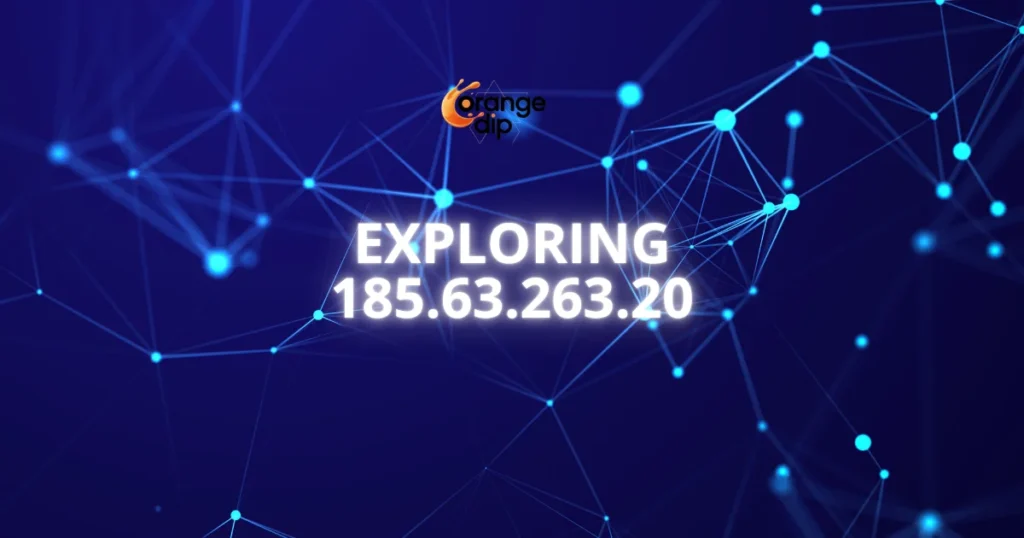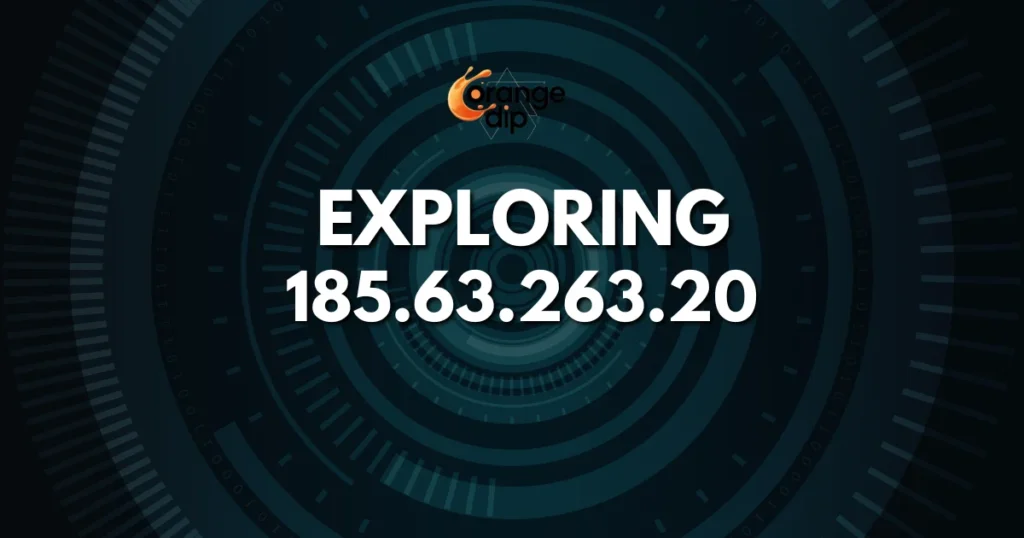If you’ve searched 185.63.263.20, you’re not alone—people all over the internet are curious about this mysterious address. What is it? Is it dangerous? The answer: it’s an invalid IPv4 address, but it keeps showing up in logs and analytics, raising questions.
In this guide, we’ll explore why it appears, how to identify malformed IPs, and actionable steps to clean your data, helping both beginners and tech-savvy users understand this unusual digital artifact.
What Is 185.63.263.20
You might have come across 185.63.263.20 in your search results, analytics dashboard, or even server logs and wondered what it means. It looks like a regular IP address, but it isn’t. The number 263 makes it invalid because real IPv4 addresses only go up to 255 in each segment.
Still, this strange address has shown up across blogs, forums, and network reports, sparking curiosity. So why is everyone talking about an invalid IP? Simple—people keep spotting it online, mistaking it for something suspicious, when it’s mostly just a harmless digital glitch or bot-generated artifact.
Also read, Is Getapkmarkets.com Safe to Use for APK Downloads
How IP Addresses Actually Work
| Octet Position | Valid Range | Example of Valid IP | Example of Invalid IP | Notes |
|---|---|---|---|---|
| 1 | 0–255 | 192 | 300 | First segment must be ≤255 |
| 2 | 0–255 | 168 | 256 | Second segment must be ≤255 |
| 3 | 0–255 | 1 | 263 | Third segment in 185.63.263.20 invalid |
| 4 | 0–255 | 1 | 500 | Fourth segment must be ≤255 |
Every IP address is a digital label that helps identify a device connected to the internet. A standard IPv4 address has four numbers, called octets, separated by dots—for example, 192.168.1.1. Each octet must fall between 0 and 255.
When a number goes beyond that limit, like the “263” in 185.63.263.20, the address becomes invalid. That’s why this one doesn’t exist on any real network or show up in a legitimate WHOIS or DNS lookup.
The Truth About 185.63.263.20
Seeing 185.63.263.20 in logs doesn’t mean something is wrong with your network. Often, invalid IP addresses appear due to typos, misconfigured crawlers, or bots generating random numbers. These malformed entries are common in server logs and analytics tools.
While they look suspicious, they are usually harmless. Understanding that this malformed IP is not a real device helps you focus on actual threats and avoid overreacting to what’s essentially a digital glitch.
What You Should Do If You See 185.63.263.20

If 185.63.263.20 shows up in your logs or analytics, don’t panic. First, verify it using IP lookup tools like WHOIS or reverse DNS—you’ll see it has no record. Next, filter or ignore it in your analytics platform to keep reports accurate.
For server logs, consider adding simple rules to exclude malformed IPs. Only escalate to your IT or security team if similar invalid entries appear repeatedly, hinting at potential bot scanning or suspicious activity.
Is There Any Security Risk?
Most of the time, 185.63.263.20 poses no real threat. Since it’s an invalid IP, it can’t connect to your network or cause harm. However, repeated appearances of malformed IPs may indicate bot activity or automated scanning attempts.
Treat them as a signal, not a direct danger. Maintain basic security practices like firewalls, VPNs, and log monitoring. Understanding the difference between harmless glitches and actual malicious IPs helps you stay safe without overreacting.
How to Keep Your Data and Logs Clean
| Action | Tool / Platform | Purpose | Frequency |
|---|---|---|---|
| Filter invalid IPs | Google Analytics / Matomo | Remove malformed IPs from reports | Continuous |
| Server log sanitization | Apache / Nginx | Exclude invalid entries | Daily |
| Pattern monitoring | Splunk / ELK | Detect repeated malformed IPs | Weekly |
| Alert setup | Security tools / SIEM | Flag suspicious activity | As needed |
Maintaining clean logs is key when malformed IPs like 185.63.263.20 appear. Use filters in analytics tools or server software to automatically exclude invalid entries. Monitor for repeated patterns of strange IPs to spot potential bot activity.
Regularly reviewing and sanitizing your logs ensures your analytics reports stay accurate and actionable. Keeping logs tidy also helps your team focus on real issues, preventing false positives and improving overall network and data security.
Also read, Why Choose Shihuanuo Shampoo for Gray Hair Coverage
Why So Many Sites Talk About 185.63.263.20
185.63.263.20 has gained attention online because it appears mysterious and unusual. Many blogs and forums write about it, often repeating the same information without checking accuracy.
This creates a trend where curious users search for it, boosting its visibility. While the IP address itself is invalid, the hype spreads quickly. Understanding this helps you separate facts from speculation and shows why reliable explanations about malformed or invalid IPs are valuable.
Expert Insight — Lessons on Internet Hygiene
Even a simple anomaly like 185.63.263.20 teaches valuable lessons about internet hygiene. Regularly checking your logs, validating IP addresses, and filtering malformed entries prevents confusion and improves security.
It also helps you spot patterns that could indicate bot activity or misconfigured systems. Staying curious and informed about strange IPs builds digital literacy and ensures your analytics and networks remain accurate, reliable, and protected against real threats while ignoring harmless glitches.
FAQ
Is 185.63.263.20 a hacker’s IP?
No, it’s invalid and harmless.
Why do fake IPs show up online?
Typos, bots, and misconfigured tools often generate them.
Should I block it in my firewall?
Not necessary; it can’t connect.
How to verify if an IP is fake or real?
Use WHOIS, reverse DNS, or IP reputation tools.
What can I do to prevent such entries?
Filter malformed IPs in logs and monitor for repeated patterns.
Closing Thoughts
185.63.263.20 may look suspicious, but it’s just an invalid IP—a harmless glitch that appears in logs and reports. Understanding why malformed IP addresses show up helps you focus on real threats and maintain accurate analytics.
Keep monitoring logs, filter invalid entries, and follow basic security practices like firewalls and VPNs. By staying informed and practicing good log hygiene, you can protect your network, prevent confusion, and make sure your data remains reliable.


